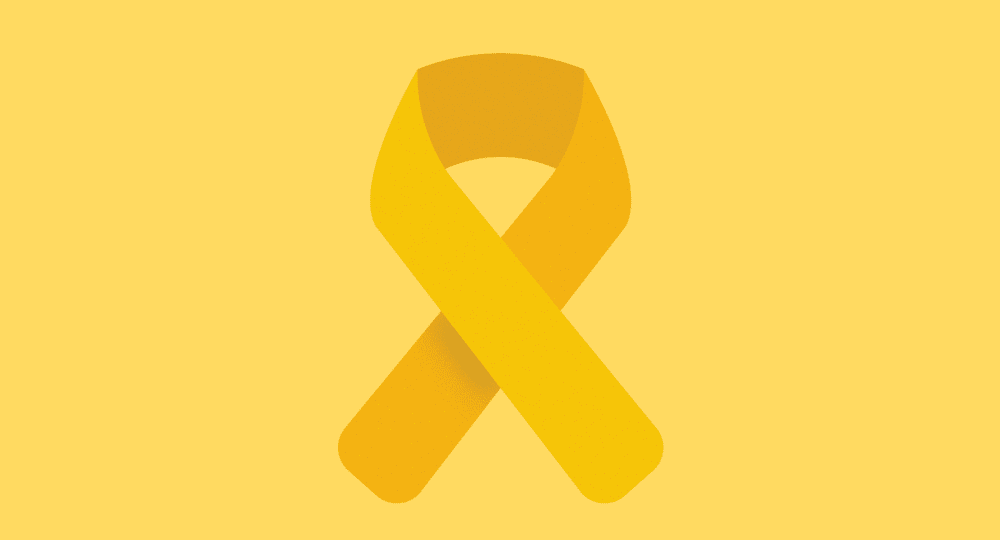In comparison to adult cancers, childhood cancers are somewhat rare. About 1 out of every 285 children in the United States will be diagnosed with cancer before their 20th birthday. Despite being somewhat rare, childhood cancers are devastating for many families. 20% of children with cancer in the US will not survive it, as cancer remains the #1 cause of death by disease for children in the US.
Common adult cancers, such as lung, breast, and colon, rarely occur in children or adolescents. Cancers of childhood tend to be more aggressive than adult cancers.
Some types of childhood cancer include:
Leukemia – A cancer of the bone marrow cells. This is the most common type of childhood cancer. Bone marrow is the center of the long bones in the body, where white blood cells, red blood cells, and platelets are made. White blood cells are important for fighting infections, red blood cells for carrying oxygen to the body, and platelets for stopping bleeding in the case of an injury. All these types of blood cells are affected in leukemia.
Lymphoma (Hodgkin’s and Non-Hodgkin’s) – A cancer of the immune system affecting lymphoid tissues (e.g. lymph nodes, tonsils, thymus). Lymphoma cells, which are abnormal, immature white blood cells, crowd out the normal lymphoid tissue, leaving the immune system unable to fight infections.
Brain Cancers and other Central Nervous System Cancers – An abnormal growth of cells in the brain or spinal cord that takes up space and can disrupt normal movement, sensation, thought, and behavior.
Neuroblastoma – An abnormal growth of immature nerve cells, typically arising in the adrenal gland, which is an organ that makes hormones. It can also form in nerve tissue along the spine, near the neck, chest, or abdomen. These abnormal cells can disrupt the normal function of the affected body areas.
Nephroblastoma (Wilms Tumor) – The most common type of pediatric kidney cancer. This cancer arises from an abnormal growth of immature kidney cells, often causing a mass in the child’s abdomen and disrupting kidney function.
Osteosarcoma and Ewing Sarcoma – Cancers of bones. These start by forming painful growths on the bone(s). They interfere with normal bone growth and stability.
Rhabdomyosarcoma – An abnormal growth of immature muscle cells. It can cause swelling and interfere with normal body function.
Pediatric cancers, just as in adult cancers, begin in one area of the body but can spread to other areas. This is known as metastasis. The extent of metastasis affects the treatment and survival of the cancer.
Pediatric oncology teams specialize in diagnosing and treating childhood cancers. Diagnosis may involve various types of imaging (e.g. x-rays, ultrasounds, MRI and CT scans), blood and spinal fluid tests, and biopsies (examination of tissue removed from the affected area). Treatment will depend on the type of cancer and how advanced it is. It may involve a single type or multiple types of treatment.
Common treatments for childhood cancers include:
- Surgery- Removal of cancerous tissue from the body by cutting it out
- Chemotherapy- The use of drugs to kill cancer cells
- Radiation therapy- The use of high-dose radiation to kill cancer cells and shrink tumors
- Immunotherapy- Therapy that helps the body’s own immune system fight cancer
- Bone marrow or stem cell transplant- Restores the body’s blood-forming stem cells. These cells, which grow into red blood cells, white blood cells, and platelets, are depleted by strong chemotherapy.
More than half of the children being treated for cancer are enrolled in clinical trials. These are research studies that are helping improve cure rates and the quality of life during and after cancer treatment. Patients involved in clinical trials can get the most up-to-date information, testing, procedures, and treatments. However, risks may include harmful side effects, extended hospital visits, and ineffective treatment. A pediatric oncologist can go over the possible risks and benefits of potential clinical trials with families. Current clinical trials can be found on the National Cancer Institute’s website.
Help raise awareness of childhood cancers this month. Some ideas include participating in a fundraiser, making a donation, and wearing gold to support kids with cancer. The American Childhood Cancer Organization and St. Jude Children’s Research Hospital are two well-known organizations that seek to improve the care and outcomes of those fighting childhood cancer.
—
Resources:
American Childhood Cancer Organization





